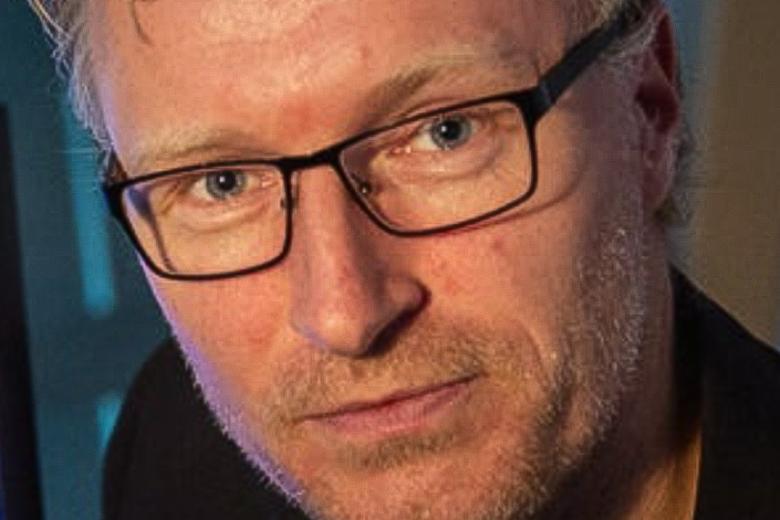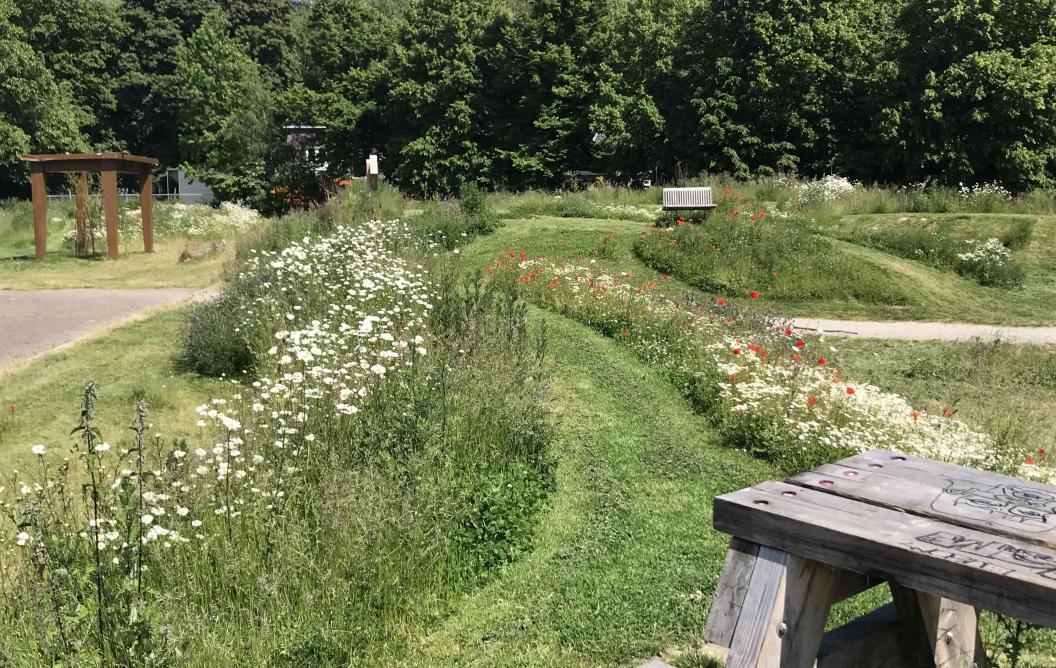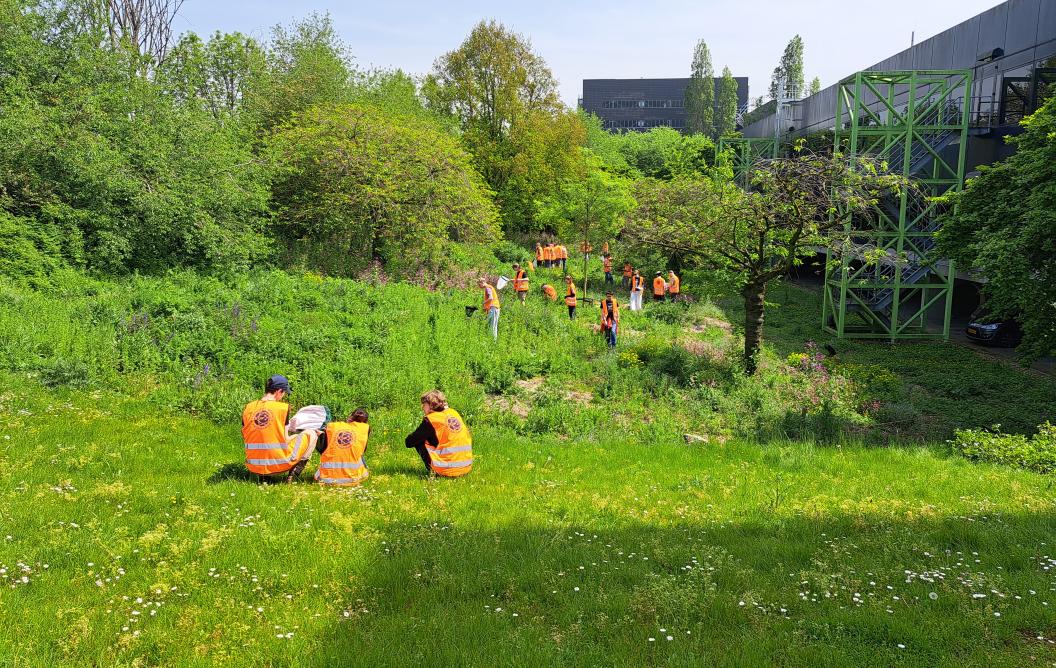More green, more life: how FS is working on biodiversity on campus
Facility Services (FS) at Maastricht University is actively working to create a greener, more vibrant, and more sustainable university campus, in line with the ambitions of the new UM Sustainability Roadmap. Through initiatives such as Bioblitz – in which students and staff can spot and register wild plants and animals on campus – the biodiversity of UM is literally brought into focus. But behind this visible action lies a world of daily work. Karel Pisters, site manager at FS, explains how he works with colleagues, students, and external experts to create a green and biodiverse environment.
From lawn to flower garden
A good example of biodiversity and social connection can be found at UNS40. “There, we transformed a large lawn into a meeting place,” says Karel. “We planted 15 nut trees, laid a hedge, and created a flower garden. Where the field used to be empty, students now sit and have lunch and relax.” The combination of nature and social use is a recurring theme. “The trees are walnut and beech – good for people and animals. Maybe students will one day pick their own nuts. Or the squirrels will beat us to it.”
From paved square to flower meadow
At the location at Grote Gracht 90, a formerly paved square has been greened with flower beds, trees, and flower meadows. These are mainly native plants that are good for insects and contribute to biodiversity. “A particular challenge was that the square originally had to remain paved because of the tents that were placed there during the introduction weeks. This obstacle was creatively solved by moving the tent location to the parking lot further down the road. Now the pavement has been turned into a meadow. More greenery, more biodiversity, and more space for recreation."

Karel Pisters works as site manager at Facility Services of Maastricht University.
Collaboration and financing
Karel works closely with his colleague Rabbe Dormans, who focuses on sustainability projects at Facility Services. “When planning at locations such as Grote Gracht, we ask students and staff what they want,” Rabbe explains. “Then Karel and I look at what is technically and ecologically possible. Once the plan is in place, we ask the Executive Board for funding.”
But the implementation often falls to Karel: “I arrange the maintenance and construction, depending on the budget and the willingness of faculties to contribute. We really do it together.”
Student input
Students are regularly involved, for example in the design of gardens. “They have lots of ideas,” says Karel, “but the implementation is sometimes more difficult. Enthusiasm often lasts a month, after which maintenance is forgotten – and then the gardens fall into disrepair.” Nevertheless, their insights remain valuable: “The garden at UNS40 was designed partly thanks to input from students.”
From medieval wall to bee paradise
Biodiversity is also a matter of conservation. “The city wall at Tongersestraat 53 is an ecological hotspot. We are not even allowed to remove some species because they are protected. The monastery garden contains plants that were brought here from all over the world by monks centuries ago.”
And then there are the wild bees. On the grounds at Oxfordlaan 55, UM - in collaboration with ecological advisor Peter Albers (CMNE) - has created one of Maastricht's most successful bee locations. “There are now 64 different species of bees living there. The bee hotspot consists of a mound of three local soil types—marl, stol, and loam—ideal for nesting, sown with local flowers. In addition to the bee hotspot, an extra flower meadow has now been created on behalf of the Faculty of Psychology and Neuroscience (FPN).
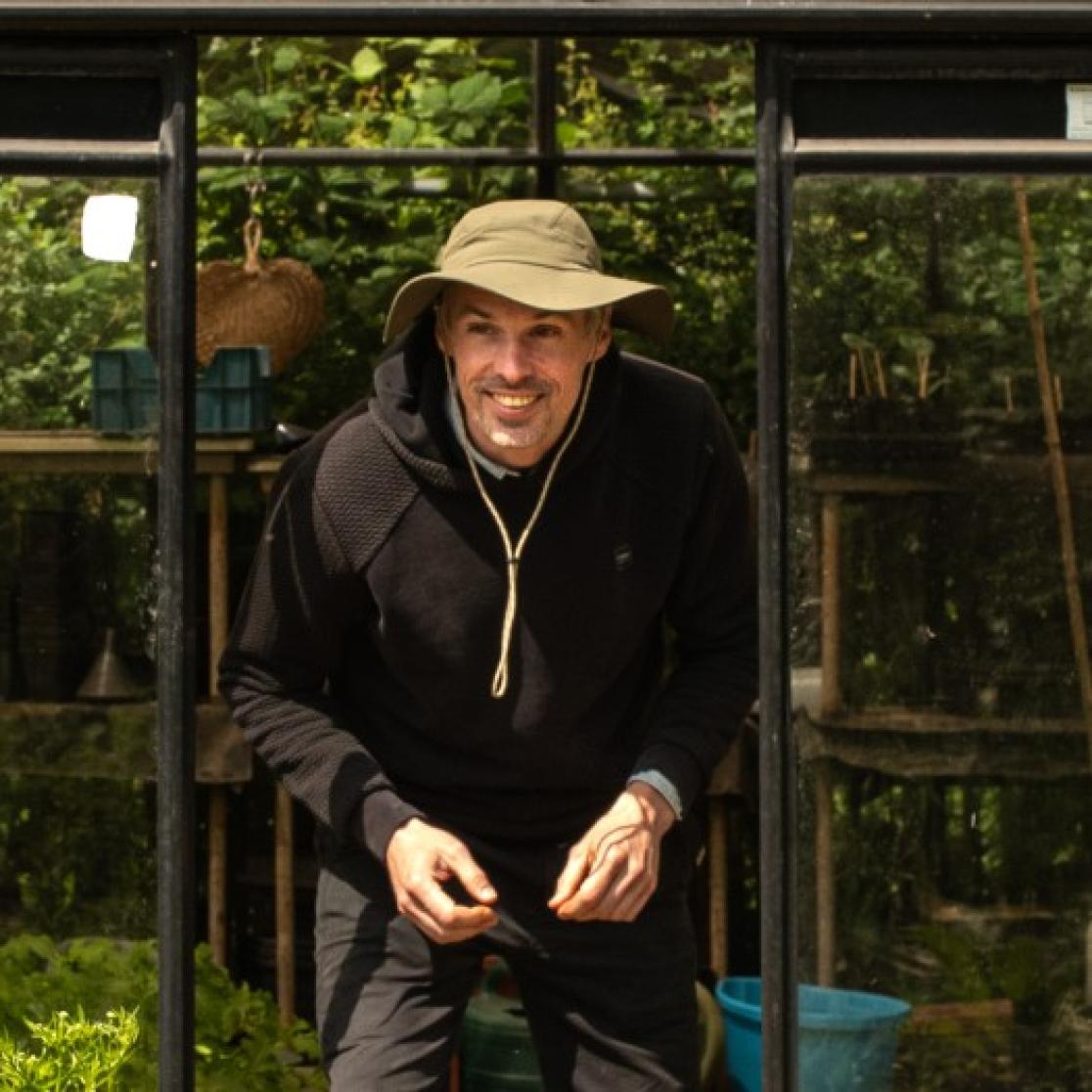
Rabbe Dormans focuses on sustainability projects at Facility Services.
The Tapijn (C)hills
A special piece of greenery has been created on the Tapijn site: the Tapijn (C)hills. This former soil depot, created from soil released during the excavation work for the new building at TAP11, has been given a second life as a flower meadow. In collaboration with Mark Franck, gardener of the Tapijn garden, the site has been transformed into a colorful, natural meeting place. The Tapijn (C)hills not only provide space for biodiversity, but also form an inviting place where students can relax, study, or get together in a green, informal environment.
Green roofs
Karel also manages the green roofs at UM. “We have four, one of which is actively maintained by an external company. The rest are more... ‘natural green’, let's say.” At UNS40, a roof was recently completely renovated and greened.
Bioblitz: biodiversity in pictures
Bioblitz is an accessible tool for visualising biodiversity on campus. Students and staff can easily take photos of plants and animals and upload them to an online database. “This gives you a picture of what lives on campus,” explains Rabbe. This initiative is led by biologist Linea van Griethuijsen (FSE) with the help of students from MSP. Linnea has also recently become the driving force of Natuurgluren, a project to make urban nature at Tapijn visible to visitors to the Tapijn campus.
We welcome initiatives that use university grounds for education and research. Rabbe visited various UM locations with ecologist Phil Klahs (FSE, MSP) in search of a suitable place for fieldwork with students. Karel also created a flower meadow at DUB30 on behalf of FS. Students from MSP (Maastricht Science Programme) have already done fieldwork here, identifying insects. This is a great example of how nature and education can go hand in hand.
Until June 22, 2025, students and staff are invited to observe, identify, and share local species via BioBlitz.
The power of perseverance
Karel has been working at FS for 12 years now. His background is in architecture, but he ended up in green maintenance through contract management. “It's the variety that makes this work so enjoyable. I spend a lot of time outdoors, on different sites. It's great to see how places change – from lawn to flower garden, from parking lot to bee paradise.”
Also read
-
Jolijn: “During the day I study medicine. In the evening, I am on stage singing and dancing”
During the opening of the academic year, Jolijn van Vugt was singing and dancing on stage at Theater aan het Vrijthof. As a performer, to be precise. The 21-year-old medical student manages to combine her studies with singing and dancing at an advanced level. She dances at the Oxygen dance school in...

-
Globalisation & Law Network seminar with Damian Chalmers
On 4 November 2025, the Globalisation & Law Network had the honour of welcoming Prof. Damian Chalmers to discuss his paper “The EU’s Governing by Legal Shadows”.
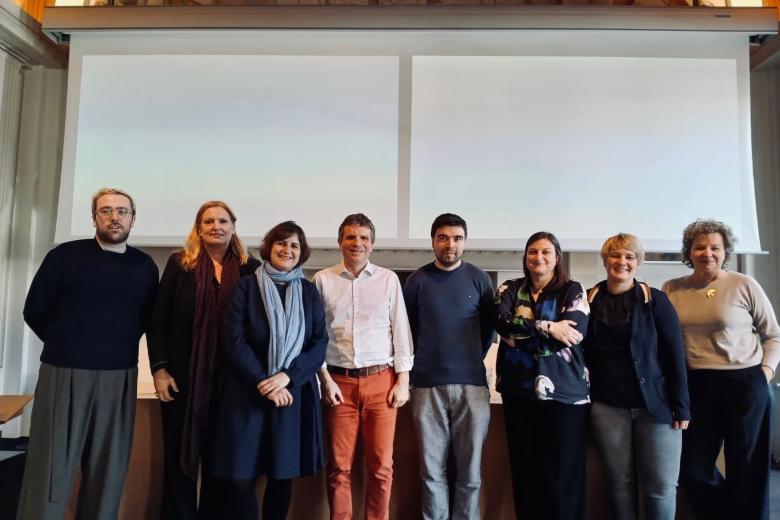
-
Moles in your living room: using augmented reality in neurorehabilitation
How can you use digital moles to help patients with Parkinson's? Melvyn Roerdink explains.
